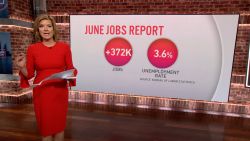So many factors go into deciding whether to quit your job, but pay is a big one.
Even if money isn’t your top priority, it’s important to figure out how much you’re actually getting from your current employer because what you make is more than just your salary or wage.
Estimating your total compensation gives you a truer measure of how much your employer actually spends on you. And it will help you figure out if a new job offer will work as well or better for you financially.
To make the comparison, include in your tally bonuses and other forms of incentive pay, the value of the current benefits you use as well as those benefits on offer that you might use in the future (e.g., paid parental leave if you plan to start a family).
All in, your total compensation may be 25% to 40% higher than your gross salary or wages, according to compensation experts.
Crunch your numbers
Some employers make it easy for you to see your total compensation by providing a “total rewards statement.”
But if yours doesn’t, check your internal human resources web site, which may provide an annual benefits statement and annual pay statements. Your annual W-2 is another resource to check, not only for gross pay, bonuses and taxes, but also for information on your employer’s costs regarding your health coverage in Box 12DD.
Consider, too, how your total compensation has changed over the past few years since employer benefits and costs may vary.
“Trend it. Have your overall benefits gone up or down? And what is that related to?” said Katie Manning, vice president in the compensation and career strategies practice at Segal.
Here are some key benefits to include on top of salary and bonus.
Health coverage: Employers typically cover the lion’s share of your health insurance premiums – 73% to 83%, according to 2021 data from the Kaiser Family Foundation.
But some employers may offer a smaller subsidy if an employee chooses a family coverage plan, according to Rob DeNinno, principal at Precision Benefits Group, which works with small to mid-size businesses.
If you’re participating in a health savings account, don’t forget to include what your company pays into your account.
Or if you don’t have an HSA, but you participate in a tax-advantaged flexible spending account for out-of-pocket health or dependent care costs, consider the limit on contributions your employer sets and how much that saves you in taxes.
For instance, if your employer lets you contribute $2,500 a year, your tax savings comes to $550 if your top federal income tax bracket is 22% ($2,500 x 22%). Even though it’s a tax benefit from the federal government, it’s good to keep in mind because not all employers offer FSAs or if they do, they may set a different limit on contributions than your current company.
Include, too, your employer’s cost to provide vision and dental insurance.
Retirement savings: Check your pay stub to see how much money your employer pays into your 401(k) every pay period and multiply it by the number of paychecks you get per year. Or, get the total amount your company contributed in 2021 from your online account at your plan provider. If that’s not available to you, do your own calculation based on the formula your employer uses to match your 401(k) contributions, which should be available on your HR site.
One common formula employers use is a 50% match on your contributions up to 6% of your salary, according to data from Brightscope/ICI. Another is a dollar-for-dollar match on your contributions up to 4% of your salary.
So if you make $100,000 and save at least $6,000 a year in your 401(k), your employer would kick in another $3,000 to $4,000 under those formulas. And that’s money you don’t have to pay tax on until you retire.
Remember, too, different companies may have different vesting schedules – the time you must work there before being able to keep all your employer’s 401(k) contributions.
Some employers may contribute to your retirement savings through a profit-sharing plan. Their contribution may vary from year to year, depending on business performance. But they will make the contribution whether or not you put money away yourself in your 401(k) or IRA.
Stock options: If you’re lucky enough to have the option to buy your company stock at a discount and your options are close to being vested, how much will the discount your employer offers save you (i.e., the difference between your “strike” or “grant” price and the current market value)? Suppose you have 50 options at a strike price of $20 a share and the stock is trading at $35 today. You might consider that $15 gain in share price multiplied by your 50 shares as part of your pre-tax compensation the year you exercise your options.
Paid time off: Count the paid weeks off available to you in a given year whether or not you take them all (e.g., for vacation, holidays and sick days). Then calculate what you would be paid for that time.
For example, if you typically gross $3,000 every two weeks, and you are entitled to take up to seven weeks off, that’s worth $10,500.
Then do the same with other types of paid time off that you might use in the future, such as parental leave, bereavement leave or family care leave.
Educational benefits: If your employer offers tuition reimbursement, student loan assistance, or pays in full for training or career development classes, add that to your compensation, Manning said.
Less immediate but valuable benefits: Disability insurance and life insurance are both good to have. If it’s tough to ferret out what your employer spends on these, a good ballpark range for both types of coverage combined might be $300 to $800 annually, depending on your income and the plan’s design, DeNinno said.
Wellness and assistance benefits: He also recommends valuing the various wellness benefits your employer provides (e.g., gym discounts or nutrition counseling) and the services available to you through an Employee Assistance Program. These may include psychological, grief or substance abuse counseling, financial coaching or legal assistance. Some EAPs may also provide help with daycare or eldercare, Manning said.
If you use any of these services, assess how much money you’re saving by not paying for them yourself.
Hard-to-price but important benefits to value
Beyond total compensation, consider benefits on offer that are hard to put a fixed dollar amount on but which are very valuable to you, said Monica Martin, the total rewards leader at Willis Towers Watson.
Maybe your company lets you work at home a few days a week – how much does that save you in commuting, dry cleaning and other related costs?
Or what about career growth opportunities or mentoring programs that could lead to a bigger paycheck down the line?
For lower wage workers in particular, Martin said, even if a new employer offers a higher hourly wage but skimps on benefits you currently have, will that new offer really provide more money at the end of the day than you’re making now?
“Think about the total package,” she said.


























